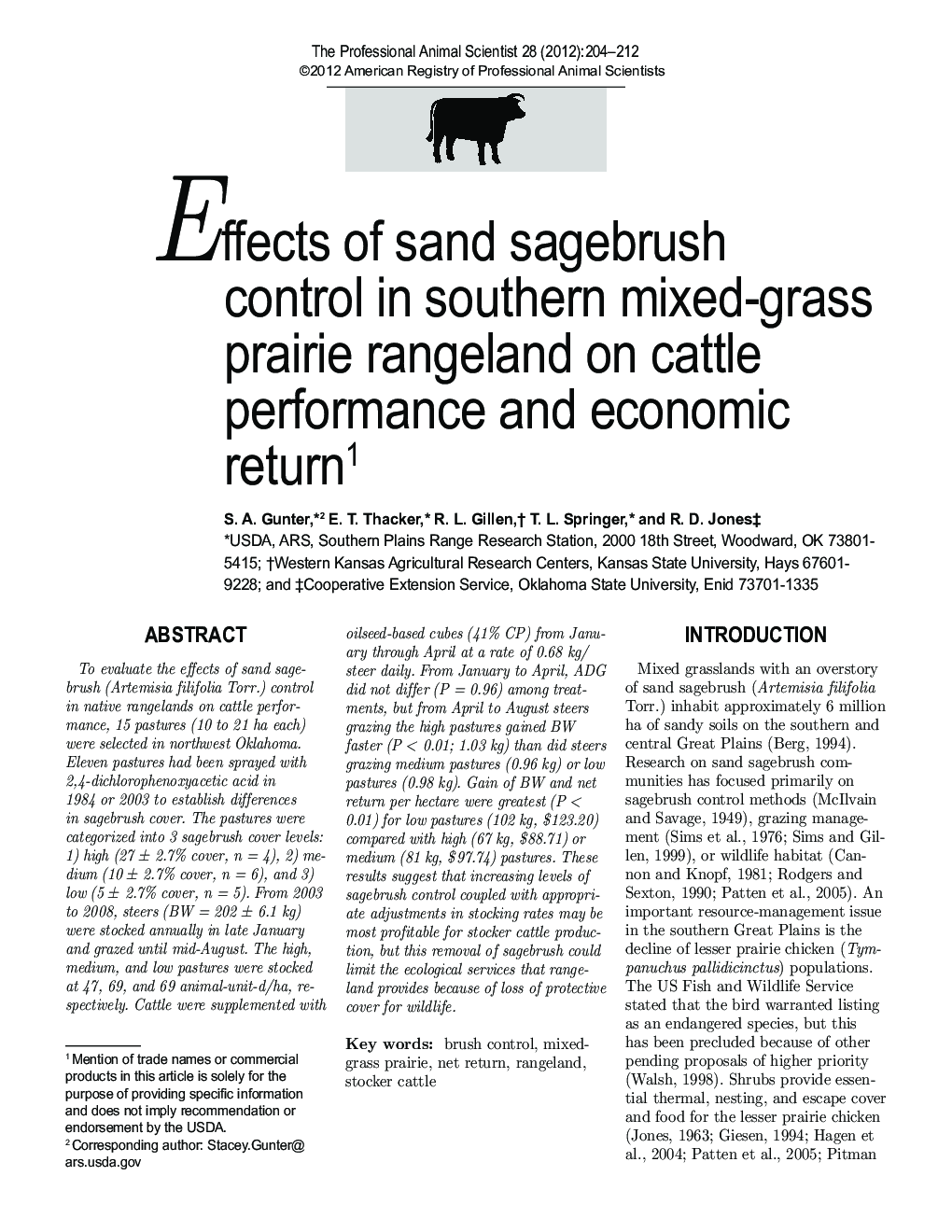| Article ID | Journal | Published Year | Pages | File Type |
|---|---|---|---|---|
| 2454250 | The Professional Animal Scientist | 2012 | 9 Pages |
Abstract
To evaluate the effects of sand sagebrush (Artemisia filifolia Torr.) control in native rangelands on cattle performance, 15 pastures (10 to 21 ha each) were selected in northwest Oklahoma. Eleven pastures had been sprayed with 2,4-dichlorophenoxyacetic acid in 1984 or 2003 to establish differences in sagebrush cover. The pastures were categorized into 3 sagebrush cover levels: 1) high (27 ± 2.7% cover, n = 4), 2) medium (10 ± 2.7% cover, n = 6), and 3) low (5 ± 2.7% cover, n = 5). From 2003 to 2008, steers (BW = 202 ± 6.1 kg) were stocked annually in late January and grazed until mid-August. The high, medium, and low pastures were stocked at 47, 69, and 69 animal-unit-d/ha, respectively. Cattle were supplemented with oilseed-based cubes (41% CP) from January through April at a rate of 0.68 kg/ steer daily. From January to April, ADG did not differ (P = 0.96) among treatments, but from April to August steers grazing the high pastures gained BW faster (P < 0.01; 1.03 kg) than did steers grazing medium pastures (0.96 kg) or low pastures (0.98 kg). Gain of BW and net return per hectare were greatest (P < 0.01) for low pastures (102 kg, $123.20) compared with high (67 kg, $88.71) or medium (81 kg, $97.74) pastures. These results suggest that increasing levels of sagebrush control coupled with appropriate adjustments in stocking rates may be most profitable for stocker cattle production, but this removal of sagebrush could limit the ecological services that rangeland provides because of loss of protective cover for wildlife.
Related Topics
Life Sciences
Agricultural and Biological Sciences
Animal Science and Zoology
Authors
S.A. Gunter, E.T. Thacker, R.L. Gillen, T.L. Springer, R.D. Jones,
